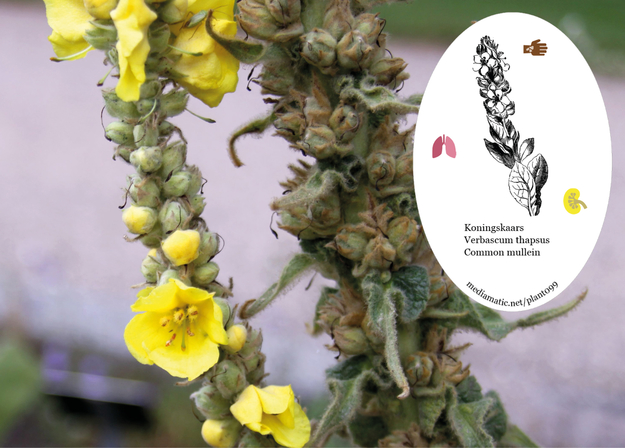Great mullein is a commonly used domestic herbal remedy, valued for its efficacy in the treatment of pectoral complaints. It acts by reducing the formation of mucus and stimulating the coughing up of phlegm, and is a specific treatment for tracheitis and bronchitis. The leaves and the flowers are anodyne, anti-inflammatory, antiseptic, antispasmodic, astringent, demulcent, diuretic, emollient, expectorant and vulnerary. An infusion is taken internally in the treatment of a wide range of chest complaints and also to treat diarrhoea. The plant combines well with other expectorants such as coltsfoot (Tussilago farfara) and thyme (Thymus vulgaris). Externally, a poultice of the leaves is a good healer of wounds and is also applied to ulcers, tumours and piles. Any preparation made from the leaves needs to be carefully strained in order to remove the small hairs which can be an irritant. The plant is harvested when in flower and is dried for later use. An infusion of the flowers in olive oil is used as earache drops, or as a local application in the treatment of piles and other mucous membrane inflammations. This infusion is also strongly bactericidal. A decoction of the roots is said to alleviate toothache and also relieve cramps and convulsions. The juice of the plant and powder made from the dried roots is said to quickly remove rough warts when rubbed on them. It is not thought to be so useful for smooth warts. The seeds are slightly narcotic and also contain saponins. A poultice made from the seeds and leaves is used to draw out splinters. A decoction of the seeds is used to soothe chilblains and chapped skin. A homeopathic remedy is made from the fresh leaves. It is used in the treatment of long-standing headaches accompanied with oppression of the ear. Source: https://pfaf.org/
Common Mullein
Verbascum thapsus
Find more about this plant on Wikipedia.
